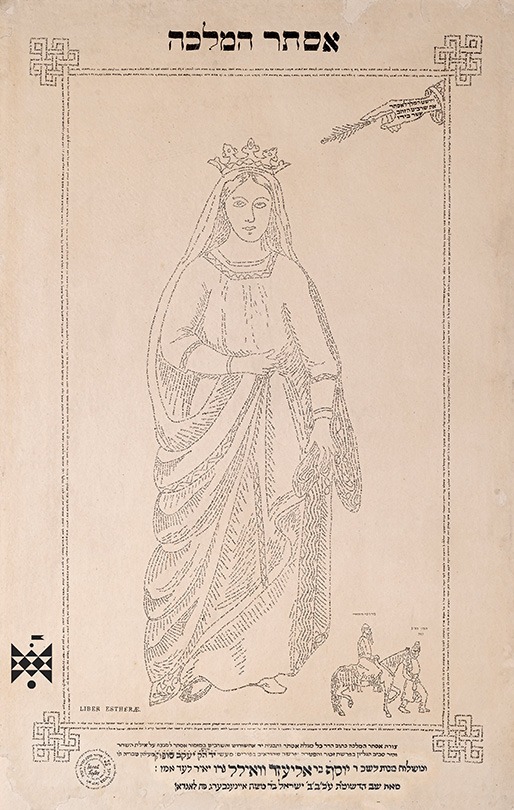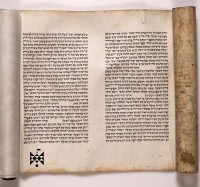EXHIBIT OF THE MONTH |
← |
Published: 2022-03-07
MEGILAT ESTER – BOOK OF ESTHER
This year, on 14 of Adar according to the Jewish calendar, i.e., from 16 March after sunset till 17 March before sunset, Jews celebrate their happiest holiday Purim. This holiday is the only one in the traditional Jewish calendar, where disguising and cheerful performances are allowed, and are referred to as purimshpils (Purim plays in Yiddish). During Purim gifts containing food are sent to friends and distributed to the poor. This festival is intended to commemorate the salvation of the Jewish community from destruction in Persia in the 5th century BC.
The events that took place in Persia and are related to the festival are described in the Book of Esther (Megillat Esther in Hebrew). The Book of Esther must be read, among other things, during the Purim festival in the evening and in the morning i.e., after evening and morning prayers. The Book of Esther, also known as The Scroll of Esther, is subject to all canonical requirements applicable to the Scroll of Torah. It is written on kosher parchment in ink. The 2nd illustration (Figure 2) of this article shows the initial sheets of The Scroll of Esther, which is stored in the museum, which also mentions Esther, a Jewish girl who became one of the wives of the Persian ruler. Esther, also known as Hadassah, because of her righteousness, protected her people from the evil attempts of the Persian king's adviser Haman to kill the entire Jewish community in the Persian Empire. The very name of the festival stems from the word pur (lot in Hebrew) that Haman threw to find out when it would be best to start annihilating the Jewish community.
The museum's collections also include an interesting portrait of Queen Esther, i.e., a microgram Queen Esther (Figure 1).

Figure 1. Microgram Esther hamalkha (Queen Esther), Hebrew, paper, printing, Ref. No. VŽM 1152
At the centre there is a portrait of Esther with a crown and mantle in full height. It contains the whole Book of Esther in Hebrew. The upper right-hand corner shows the hand of ruler Ahasuerus with a sceptre. It also contains Esther's victory song at dawn. The lower right corner depicts Esther's uncle Mordechai riding a horse and Haman leading Mordechai's horse by a leash. Above their heads, their names are written in Hebrew. All of the mentioned figures are framed by two-band frames decorated with fragments of geometric ornament in the corners. They contain chapters on Zachor, Haftara and the Torah chapter, which are read during the Purim Festival.
The author of the microgram identified below the portrait is a sopher (the scribe who wrote the Book of Esther) Yakov, to the left – his stamp with the version of the sopher’s name in Latin and the initials – Jacob Sofer, JS.

Figure 2. Megillat Esther (The Scroll of Esther), parchment, ink, Ref. No. VŽM 1112
Prepared by Ilona Murauskaitė, Head of Inventory, Research and Conservation of Holdings Department
© From the holdings of VGMJH
© Photo courtesy of Paulius Račiūnas
| ↑ | ← |
